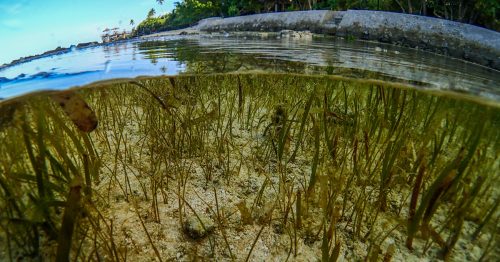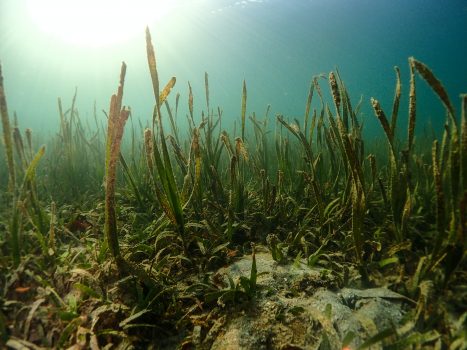Seagrass Converts Carbon Dioxin at 8X the Rate of a Forest!
Ready for a surprising fact? Among many ecosystems that help absorb and store a large amount of carbon dioxide, seagrass is shockingly one of the most efficient natural carbon environments! Catch more information on this right below!

Seagrass: the Ideal Carbon Sinks!
In a recent sharing of the UN’s Intergovernmental Panel on Climate Change, they have urged for more changes to avoid unforeseen catastrophe gravely. However, despite the organization’s and others’ efforts, what we are doing is not enough to reduce greenhouse gas production levels. As a result, one of our critical mission nowadays is to lower the number of pollutants in our atmosphere.
One of the ideal solutions for this problem is “carbon sinks,” as you might have read. In detail, they are ecosystems that could absorb and store large amounts of carbon dioxide. To put it simply, all living organisms that consist of carbon should fall under the same category – carbon sink. The list includes all animals, plants, algae, and even bacteria. When we talk about this, most people will often think of forests, don’t we?

However, do you know that when we turn them into firewood, their carbon release back to the atmosphere would be CO₂? While we often consider forests as a moderately efficient carbon sink, their capacity is quite limited. Based on various researches, they only place fifth on the scale of the most efficient ecosystem for carbon storage. Above them are salt marshes, mangrove forests, then (shockingly) seagrass meadows, and finally, the best of all, tundra. Are you surprised to see seagrass in this ranking? Under the water, they possess an excellent capacity for taking up and storing carbon. Moreover, due to the oxygen-depleted seabed, they decompose at a slower pace than on land. These dead plant material should trap the carbon for hundreds of years.
More effective
These days, seagrass meadows are in recession due to many harmful human activities. As a result, we must act and start the re-establishment of these meadows as fast as possible. A rough calculation even proves that should we restore one hectare of seagrass; they could work as ten hectares of dry-land forest and even as much as 40. Additionally, as they are not like seaweeds, we could sow seagrass meadow by planting seeds or small shoots.







